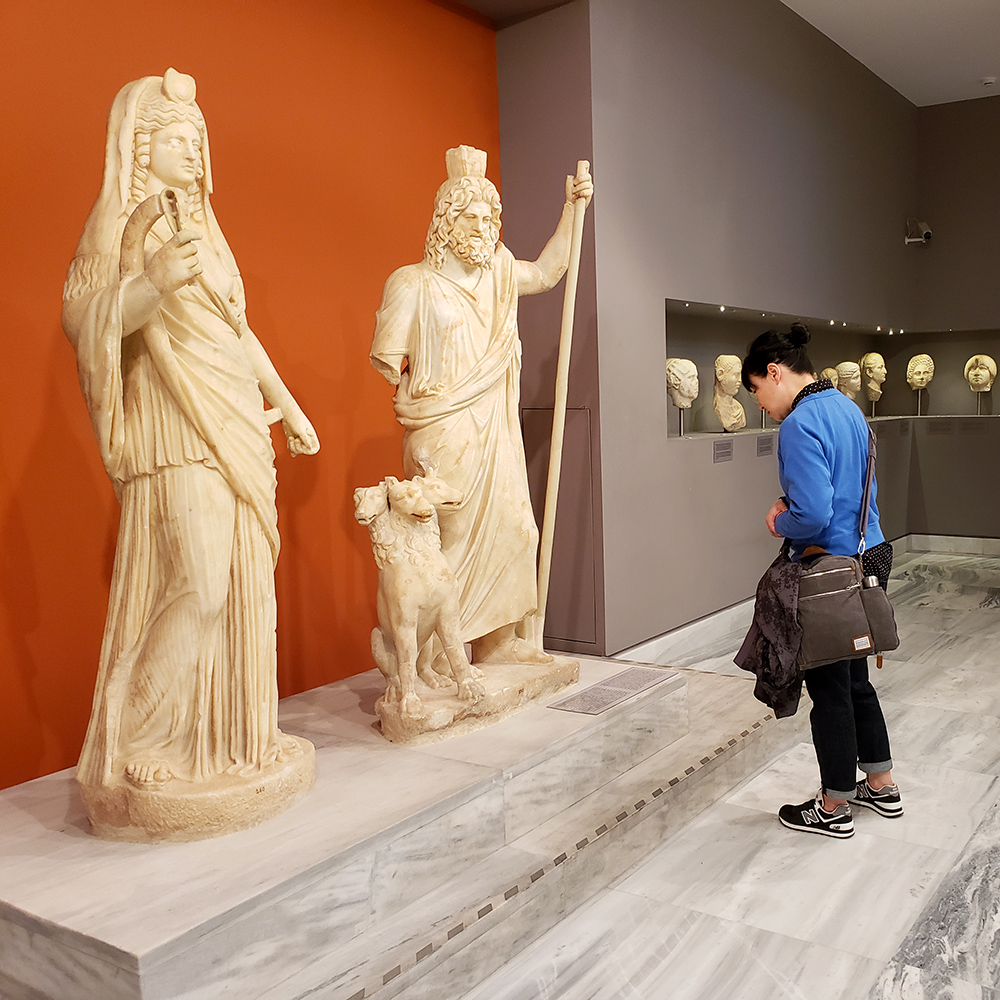
After our visit to Knossos, we took the bus back in to town and visited the Heraklion Archaeological Museum. One of the top museums in Greece, it focuses heavily on Minoan history, particularly the finds from Knossos. The museum is a good way to try to understand the context of the archaeology we’d seen.
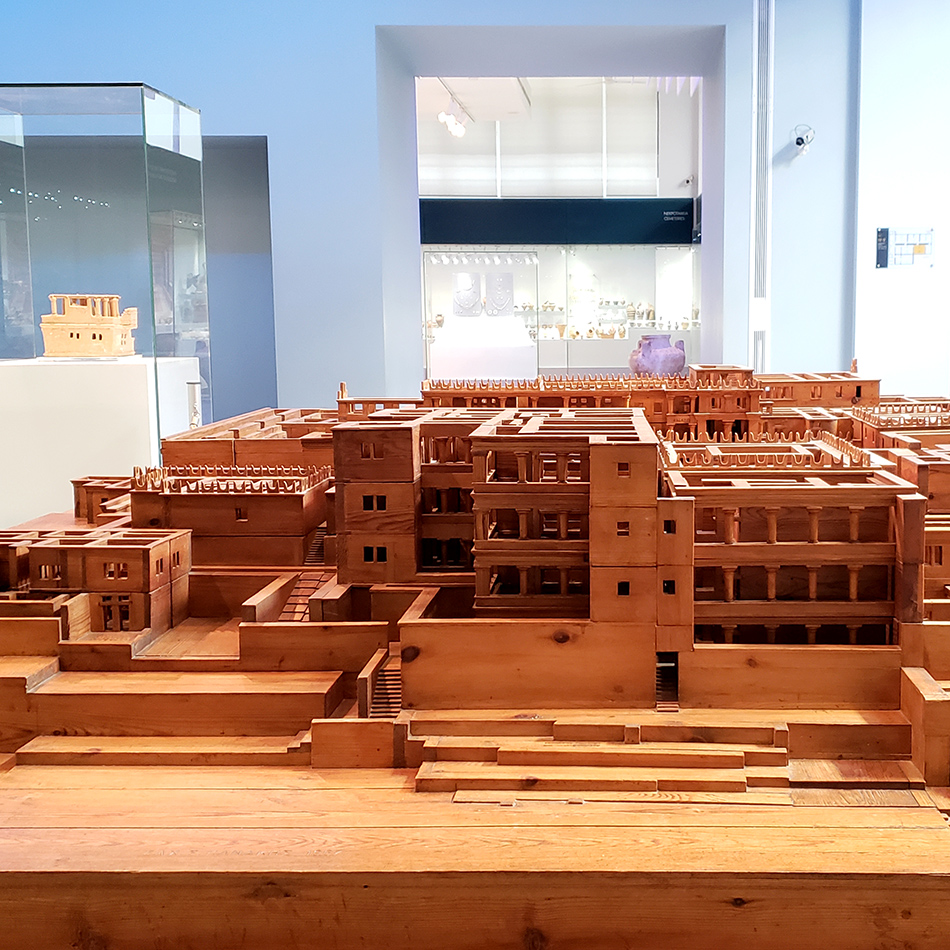
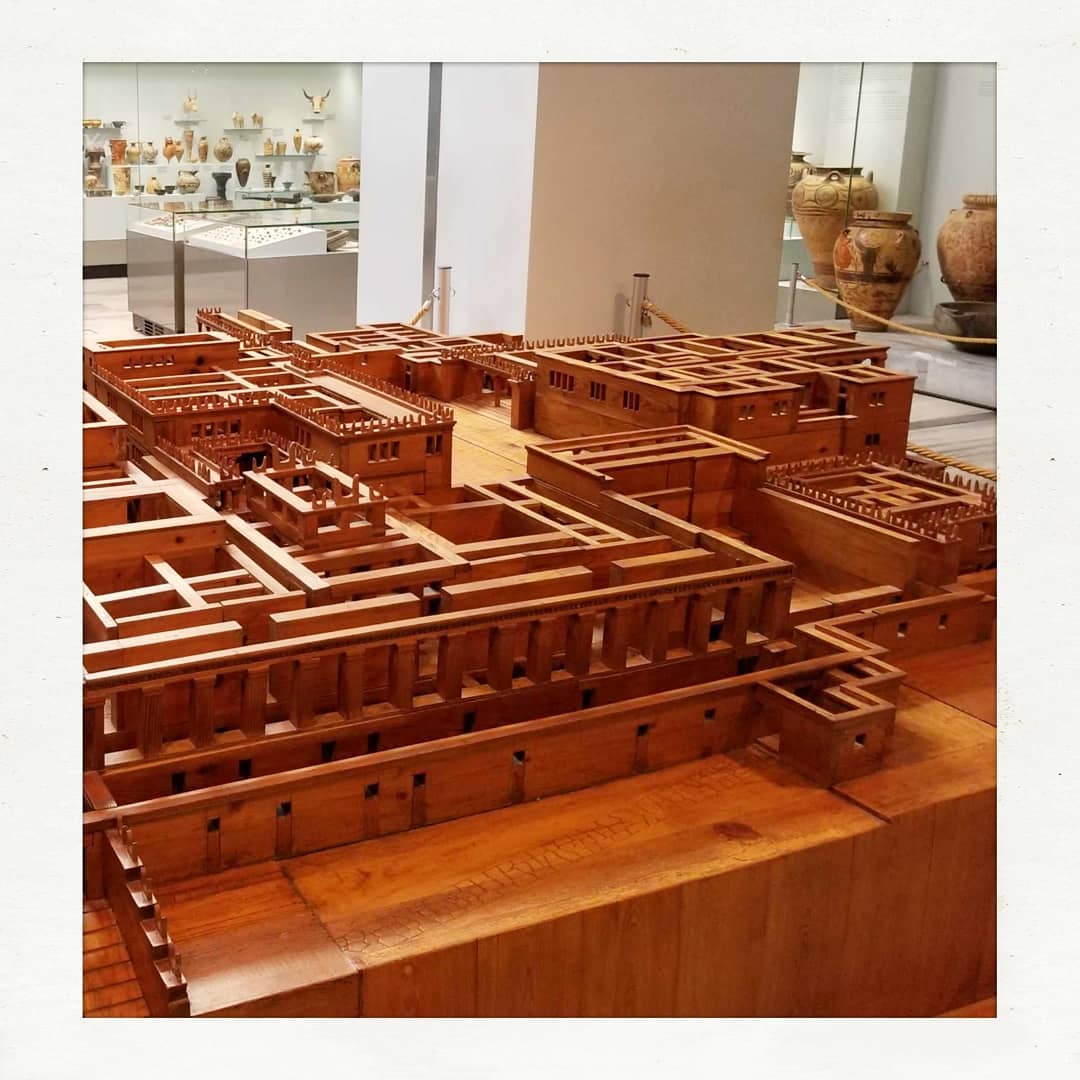
One of the first things we saw was a scale wooden model of the Palace of Knossos. This model showed an interpretation of how the palaces might have look at their peak: definitely a contrast to the hills and stone foundations we’d just seen.
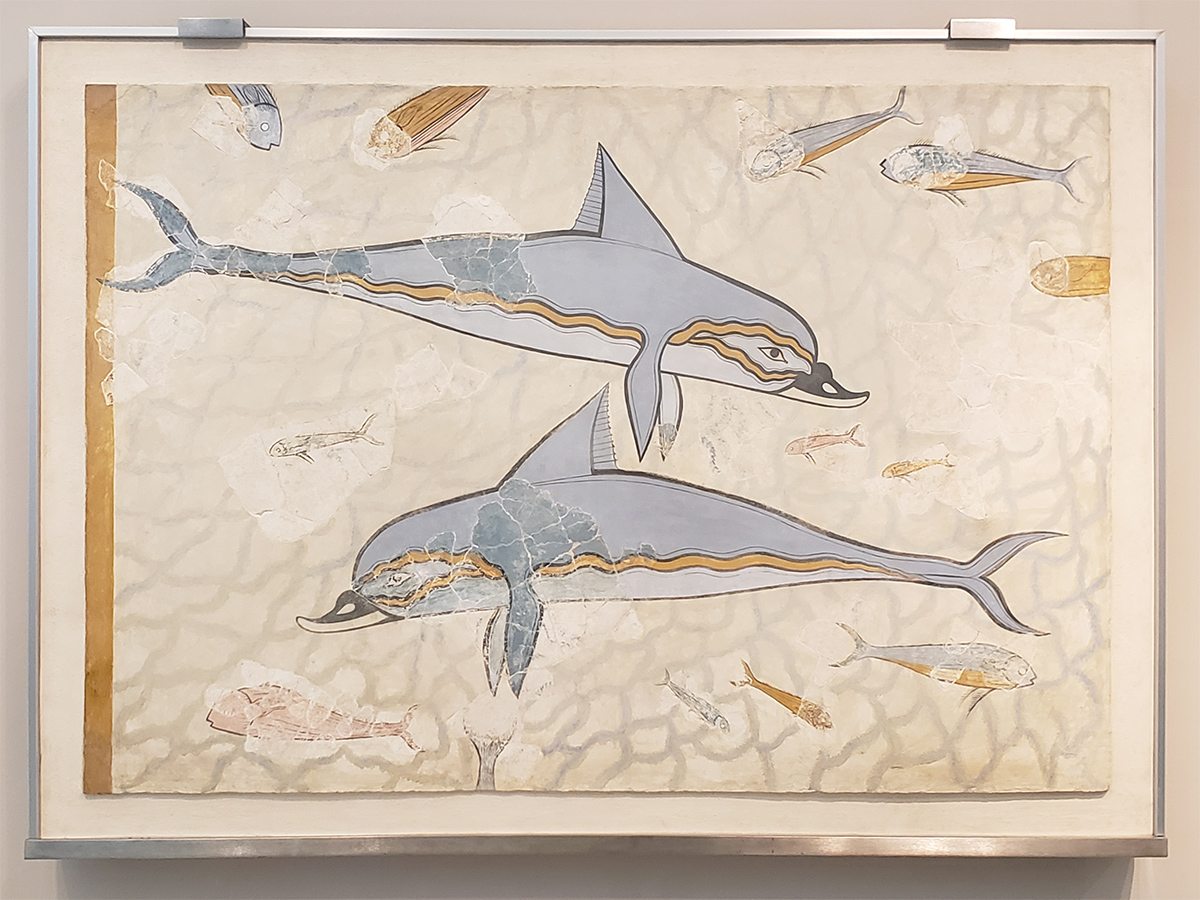
Also on display were a number of the original fresco paintings rescued from the excavation site, including the Dolphin Fresco and the Bull-Leaping Fresco.
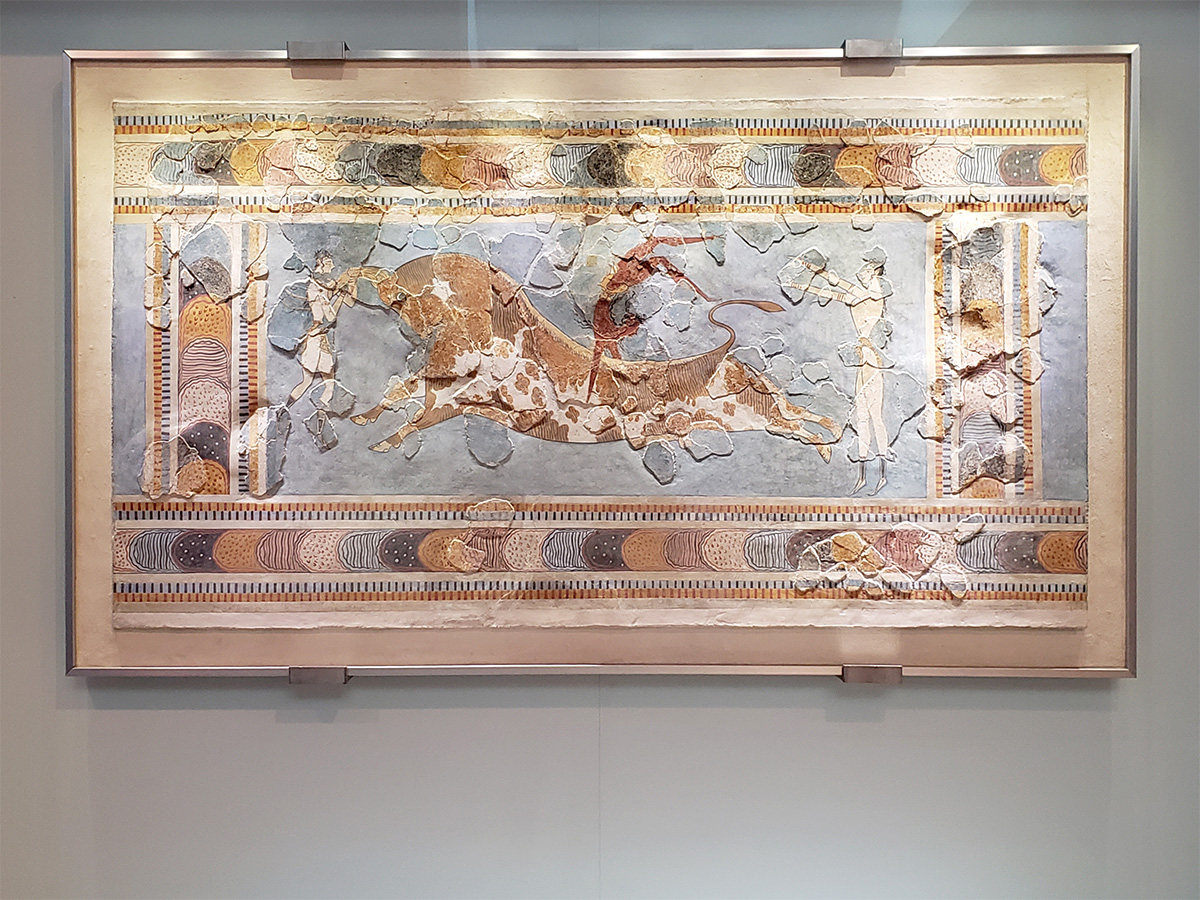
It’s important to notice that only a few broken fragments of these are ancient: the rest are modern paintings that suggest what the original composition might have looked like. The interpretations look pretty good, to my eye, but obviously there are probably inaccuracies as nobody really knows what was lost.
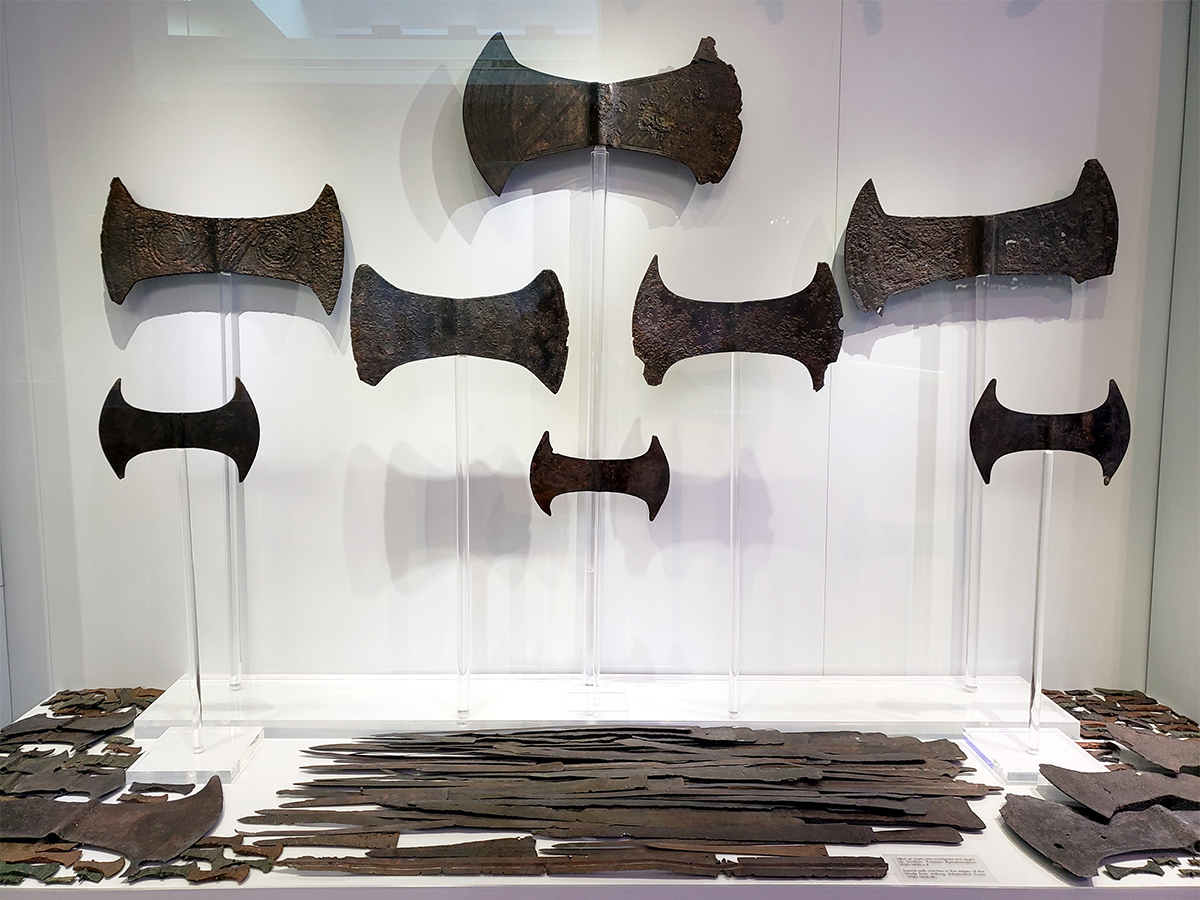
Several display cases are filled with bronze axes and other metal weapons: these are what is known as the Arkalochori Horde. They were discovered in the 1930s inside a cave near the town of Arkalochori in Crete.
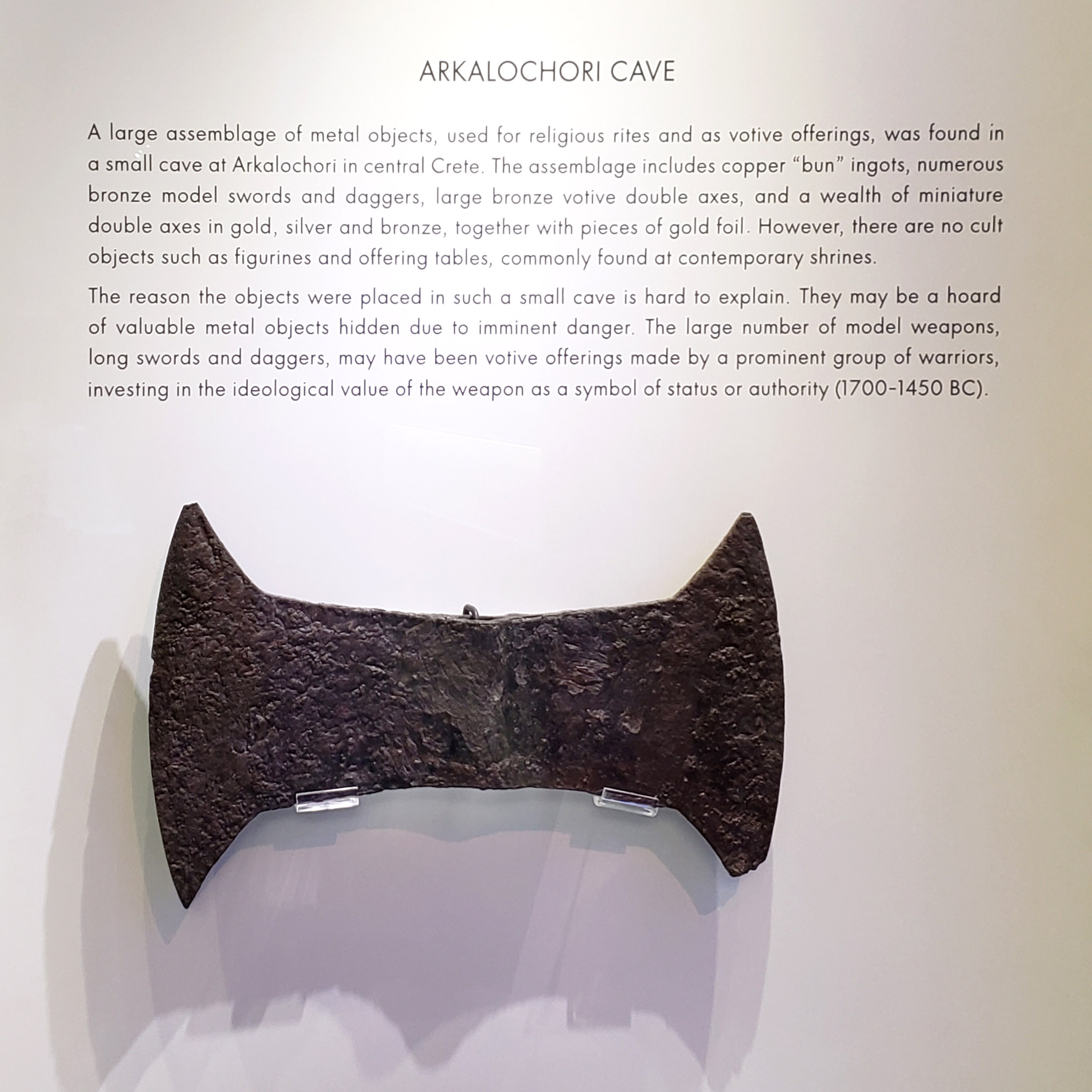
In 1912, locals had previously found metal implements in the caves and sold them for scrap metal. In 1932 children found a gold axe, which lead to a rush of treasure seekers. Archaeologists took over and found the rest of this horde hidden in side caves. The reason these items were were placed there is unknown.
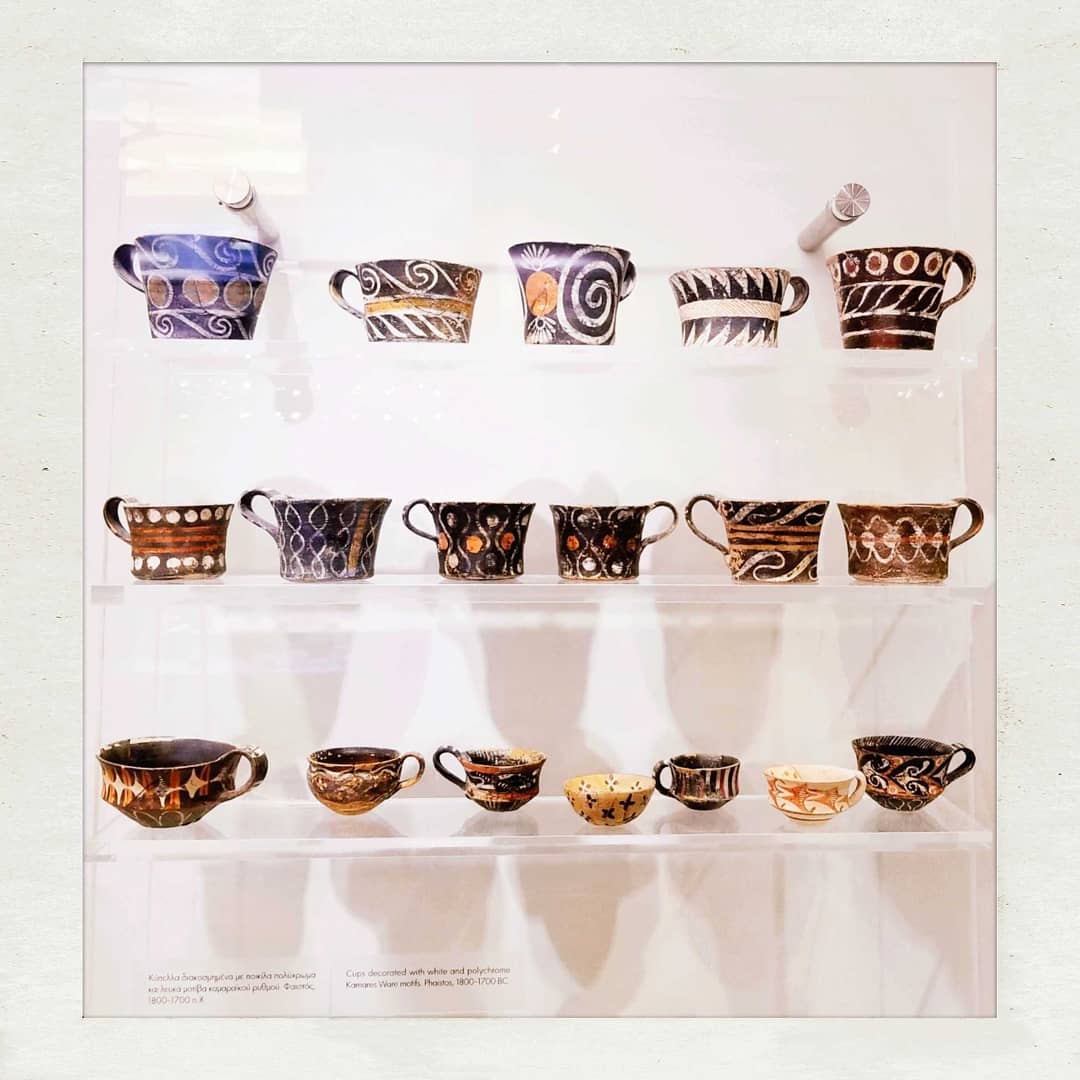
Elsewhere we saw these surprisingly modern-looking ceramic cups, dating to 1800-1700 BC. These were found at Phaistos, another Minoan palace excavated on Crete.
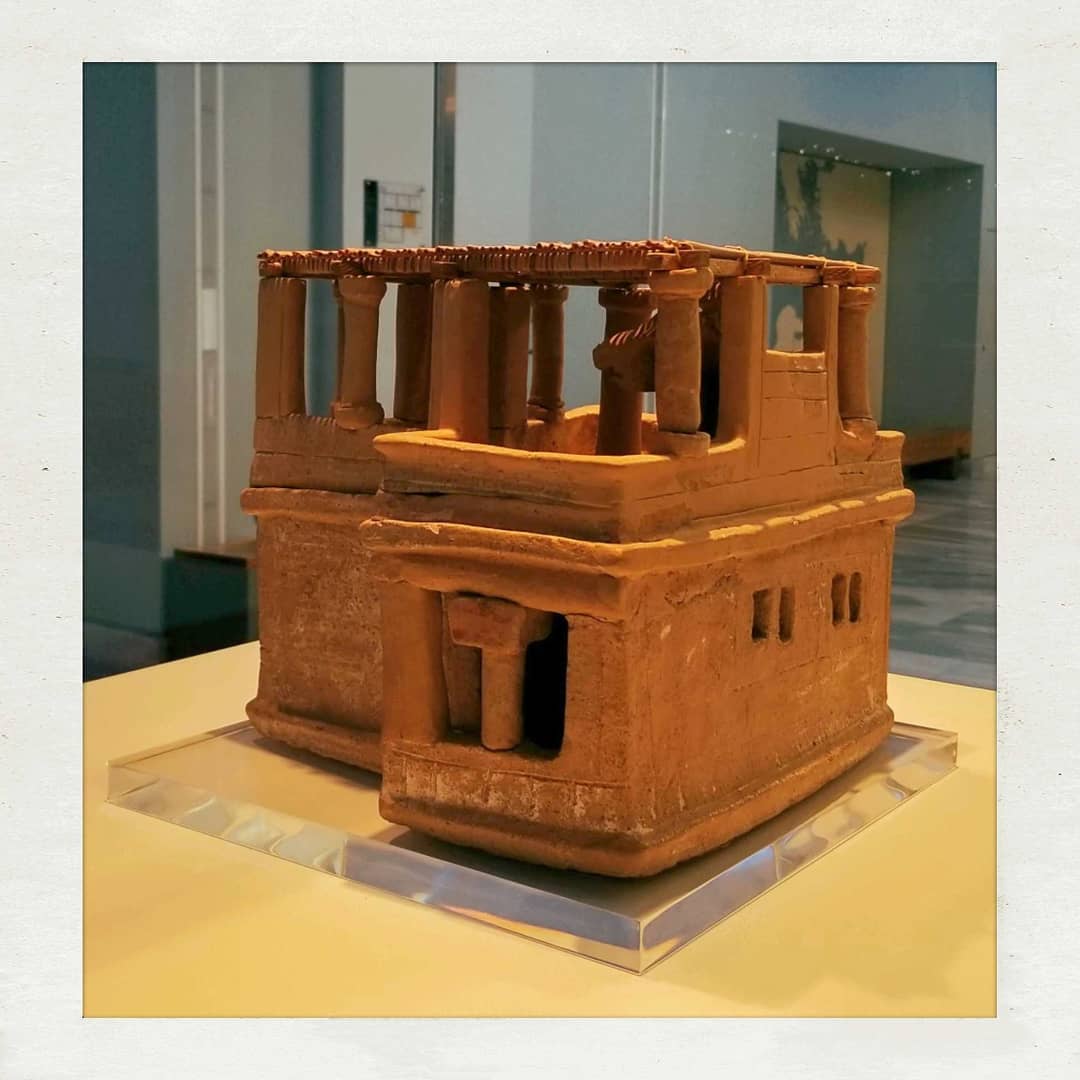
This is a model of a house from the town of Archanes in Crete. It dates to 1700 BC and shows the main aspects of Minoan architecture.
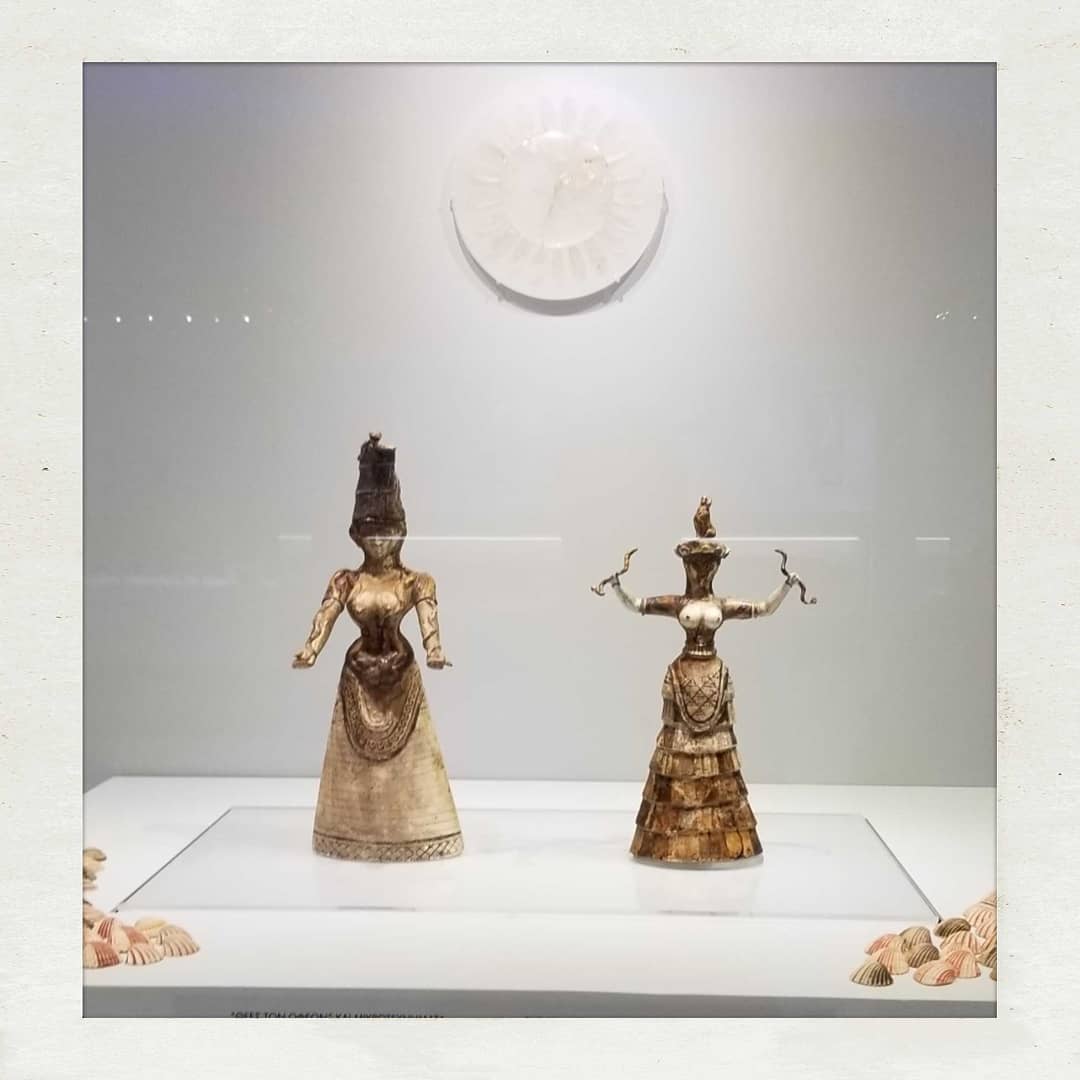
These are several figurines of the intimidating Minoan Snake Goddess, excavated from Knossos. As with many finds at Knossos, however, these figurines were reconstructed from broken shards and their interpretation as a “goddess” is disputed.
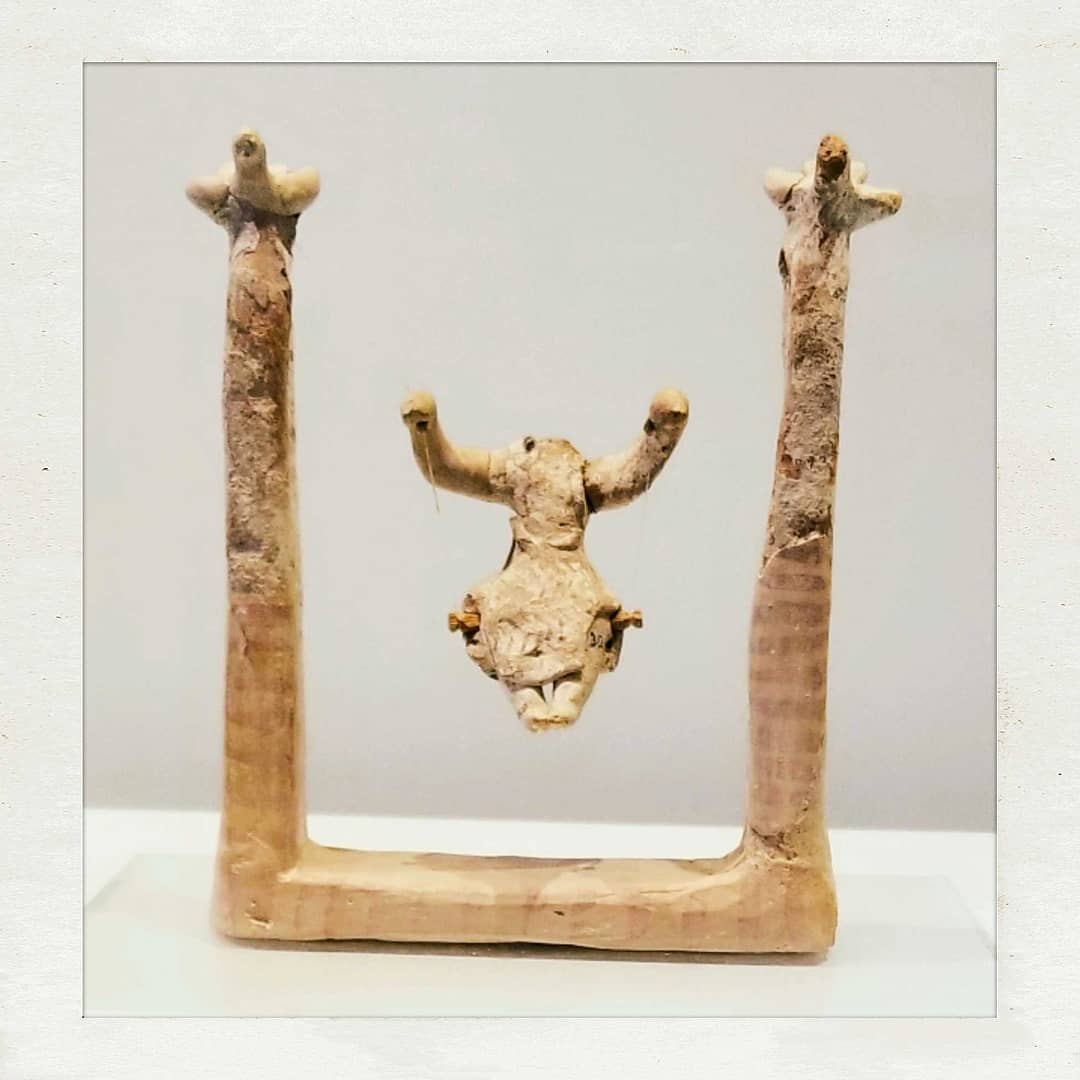
Most creative was this figurine dating to 1500 BC of a goddess suspended between two pillars on a type of “swing”. It is thought this represents the descent of the goddess, with the figures on the pillars being her attendants.
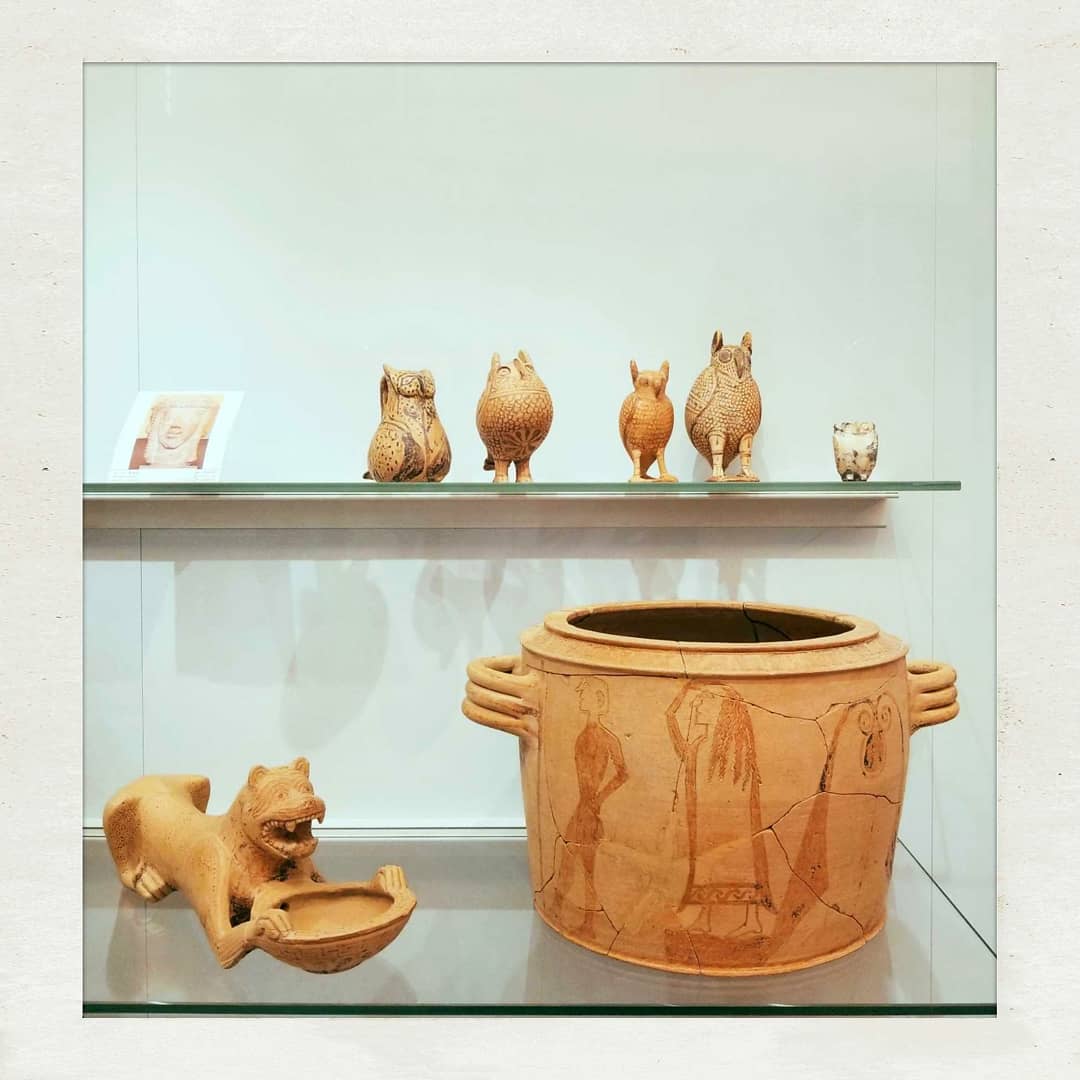
These tomb vessels, including very nice owls, were made in Knossos.
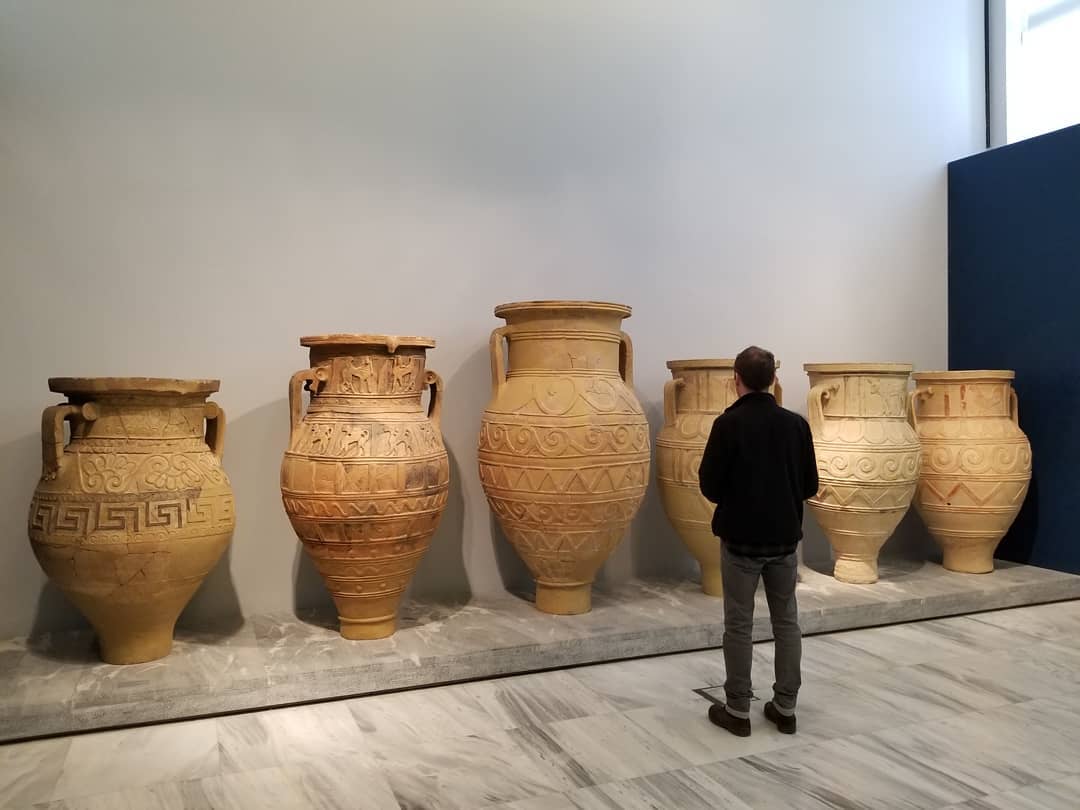
These towering amphorae from Knossos were impressive: the ability to own and fill these containers with grains, oils or other substances was seen as a way of showing off wealth. We’d seen similar amphorae at the Knossos archaeological site but it’s unsure if they were replicas.